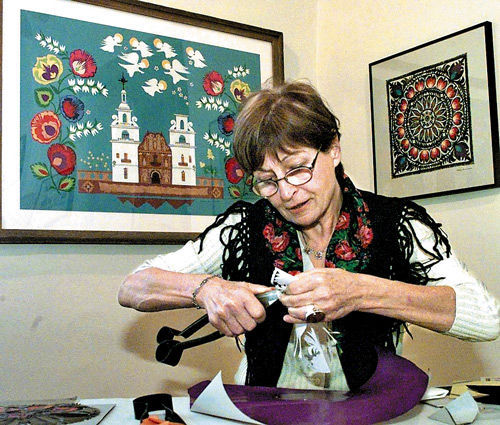Not long ago I posted a series of pics about the papercut art of Maude White. Those works are so detailed that it is hard to believe that they have been created out of paper with a scalpel.
The art of papercutting is ancient and varied, having evolved out of unique and different cultural styles.
The oldest surviving paper cut out is a symmetrical circle from the 6th century Six Dynasties period found in Xinjiang China. By the eighth or ninth century papercutting appeared in West Asia and in Turkey in the 16th century. Within a century, papercutting was being done in most of middle Europe.
Some cultural examples:
China:
Jianzhi is a traditional style of papercutting in China. Jianzhi has been practised in China since at least the 6th century AD and has a number of distinct uses in Chinese culture, almost all of which are for health, prosperity or decorative purposes. Red is the most commonly used colour. Jianzhi cuttings often have a heavy emphasis on Chinese characters symbolizing the Chinese zodiac animals.
Chinese papercuttings in a shop
Indonesia:
Indonesian traditional art has been influenced by traditional Chinese Artisans. Batik is an Indonesian traditional art and paper cutting. Batik is framed in profile to expose the intricate detail of Batik.
Indonesian papercut displayed between glass sheets
India:
Sanjhi is the Indian art of paper cutting. The cut paper is usually placed on the floor and colours are filled in to make Rangoli, decorative patterns on floors and entrances as welcoming signs for Hinu deities.
Intricate Indian papercut
An example of Rangoli
Jewish culture:
Papercutting has been a common Jewish art form since the Middle Ages, connected with various customs and ceremonies, and associated with holidays and family life. Paper cuts often decorated marriage contracts, walls and plaques, and for ornaments on festive occasions.
Jewish papercut, 19th century
Poland:
Polish wycinanki became a popular folk craft in the mid-1800s and originated with shepherds cutting designs out of tree bark and leather. Colorful wycinanki were pasted on furniture or roof beams as decoration, hung in windows, and given as gifts. The art varies by region, some being monotone and pthers brightly coloured. Techniques include cutting, clipping, punching, tearing, and carving of paper, as well as nalepianki in which multiple layers are glued together. Subject matter includes peacocks, roosters, and other birds; circular or star-shaped medallions; flowers; and annual holidays such as Easter and Christmas.
Examples of Polish papercutting:














No comments:
Post a Comment
Note: Only a member of this blog may post a comment.